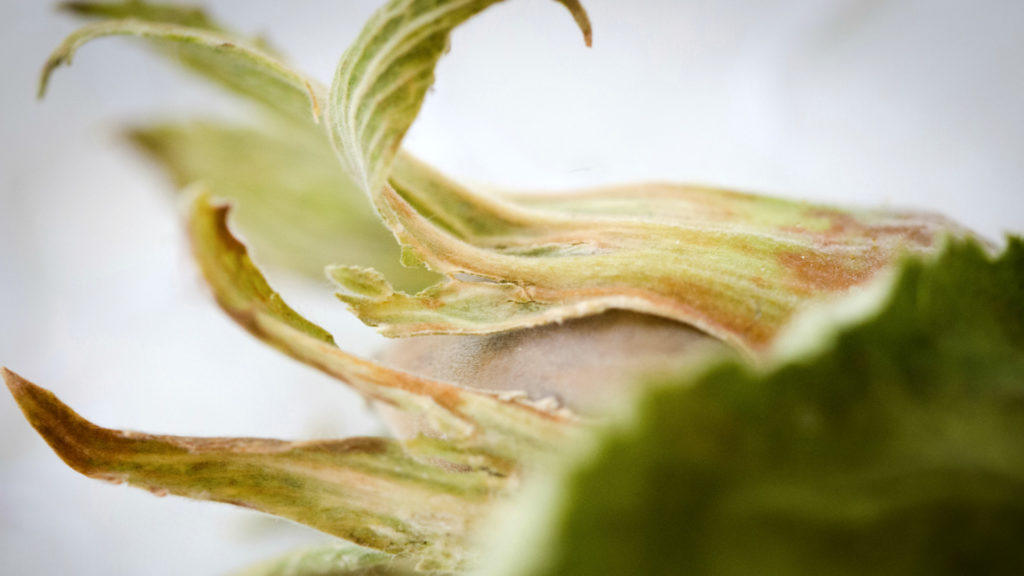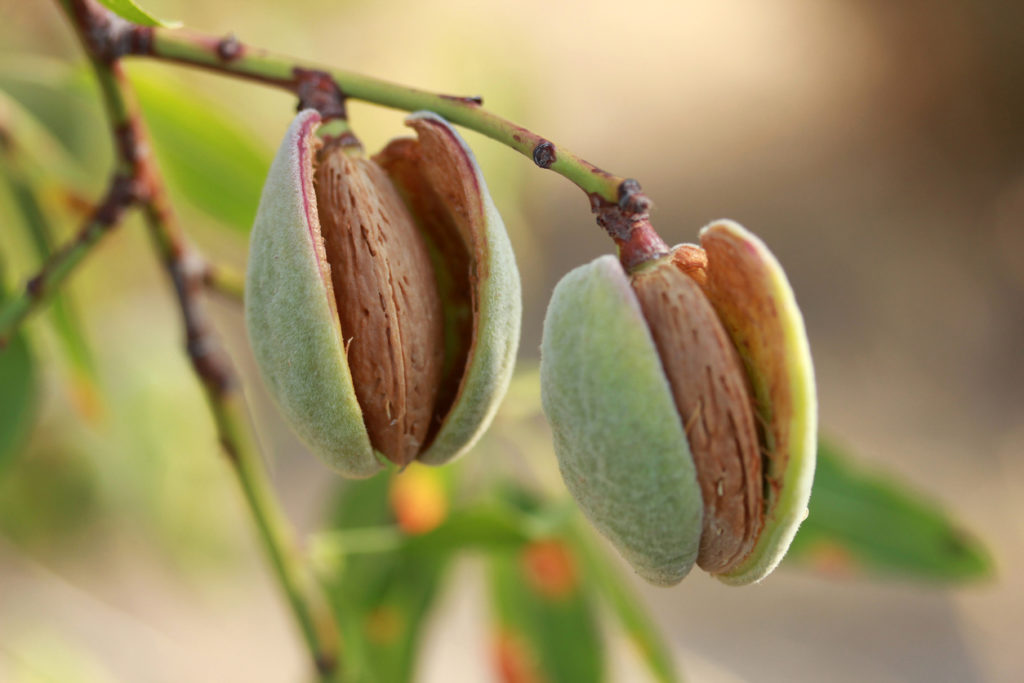Nut trees can be a great addition to your edible landscape. Like other crop-bearing trees, many nut trees start to yield fruit in 3-5 years. In addition to enjoying the fruits of your harvest, many nut trees work well as shade trees and bloom lovely flowers in the spring. Many nut trees are slow-growing and require more space than is available in urban settings.
Here are four fast-growing nut trees that can be grown in the home landscape.
1. American Hazelnut
Corylus Americana
 The American hazelnut (also known as the American filbert) is a native shrub of the eastern United States. The tasty nuts are highly prized by cooks for their easy-to-crack shells and small, sweet kernel. Squirrels love them as well … most likely for the same reasons. Hazelnut hedges can be used as windbreaks, visual screens, and to attract wildlife.
The American hazelnut (also known as the American filbert) is a native shrub of the eastern United States. The tasty nuts are highly prized by cooks for their easy-to-crack shells and small, sweet kernel. Squirrels love them as well … most likely for the same reasons. Hazelnut hedges can be used as windbreaks, visual screens, and to attract wildlife.
If you’re interested in planting hazelnuts for their nuts, be sure you have a bit of space. You’ll need to plant 2 or more shrubs to ensure a good crop.
Height 15-18 ft.
Hardiness zones 4-9.
2. Arbor Day Farm Hazelnut
Corylus spp.
 Hybrid hazelnuts from Arbor Day Farm combine the characteristics of two North American native species – American and beaked – and the European hazel. Originally crossbred in Minnesota, these shrubs will likely produce sweet, tasty nuts in approximately 4-5 years. Hazelnut shrubs also have a high wildlife value providing food, nesting and hiding cover for many birds and mammals.
Hybrid hazelnuts from Arbor Day Farm combine the characteristics of two North American native species – American and beaked – and the European hazel. Originally crossbred in Minnesota, these shrubs will likely produce sweet, tasty nuts in approximately 4-5 years. Hazelnut shrubs also have a high wildlife value providing food, nesting and hiding cover for many birds and mammals.
If considering Arbor Day Farm hazelnuts (or any hazelnut for that matter), be sure you have a bit of space, as you’ll want to plant 2–3 shrubs to ensure a good nut crop.
Height 10-15 ft.
Hardiness zones 3-9.
Top 5 Nut Trees Sold Through the Arbor Day Tree Nursery
3. Carpathian English Walnut
Juglans regia ‘Carpathian’
 This walnut tree is primarily grown for its nuts. The mild-tasting, thinly shelled nuts are easy to crack and are a favorite for fresh eating and baking. And unlike the standard English walnut tree, the Carpathian variety has increased cold hardiness. These trees can regularly withstand temperatures as low as -20° F.
This walnut tree is primarily grown for its nuts. The mild-tasting, thinly shelled nuts are easy to crack and are a favorite for fresh eating and baking. And unlike the standard English walnut tree, the Carpathian variety has increased cold hardiness. These trees can regularly withstand temperatures as low as -20° F.
In addition to its fall nut harvest, the Carpathian English walnut develops a spreading crown that provides great shade.
Height 40-60 ft.
Hardiness zones 5-9.
4. Hall’s Hardy Almond
Prunus dulcis

Looking for a small, nut-bearing tree that also provides ornamental value? The Hall’s hardy almond may be your answer. Standing at a height of 15–20′, it is a profuse late-spring bloomer, with masses of pale pink flowers. And while not used for commercial production, this tree’s almonds are good to eat or cook with.
Height 10-15 ft.
Hardiness zones 5-8.



This is great to know. I plan on getting these trees as soon as I get a downstairs apartment. So happy to be looking right now.
The Hazelnut, English Walnut and Almond trees are what I want in my garden!
Do you have black and gold walnut
Pecan
Filbert
Pin on
Native Plum
You can view our selection of fruit and nut trees on the Arbor Day Tree Nursery.